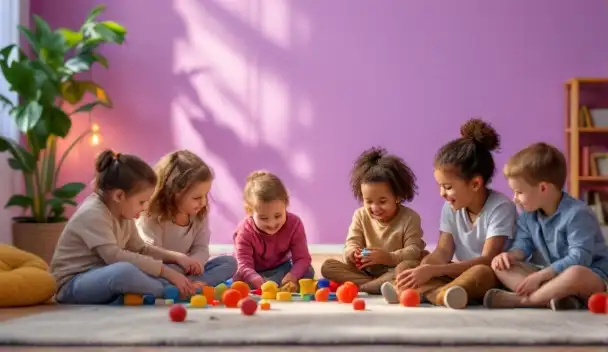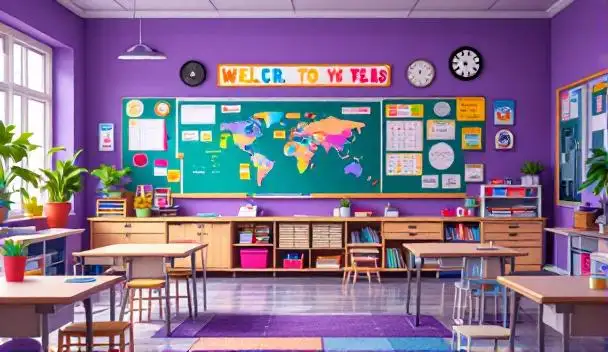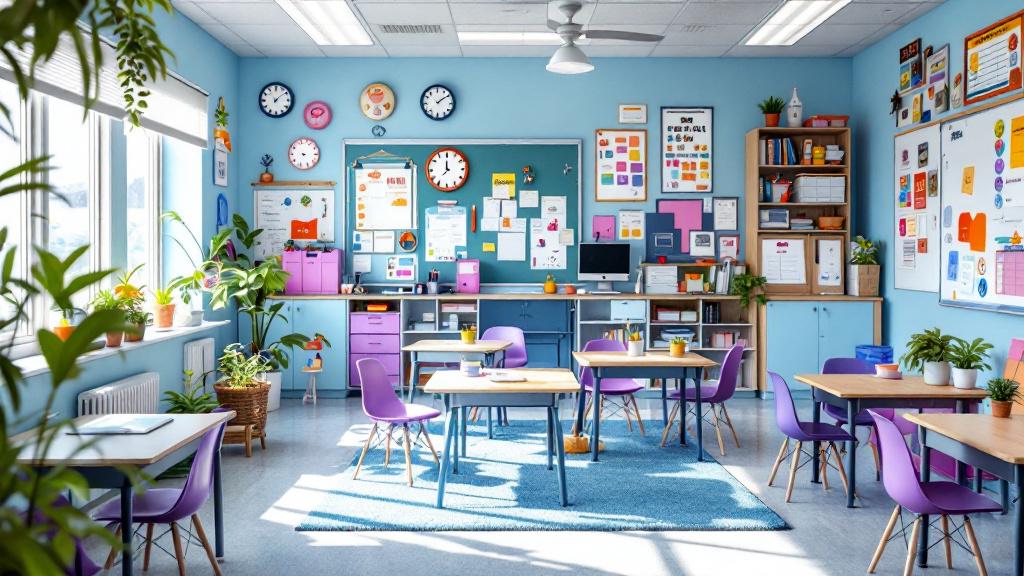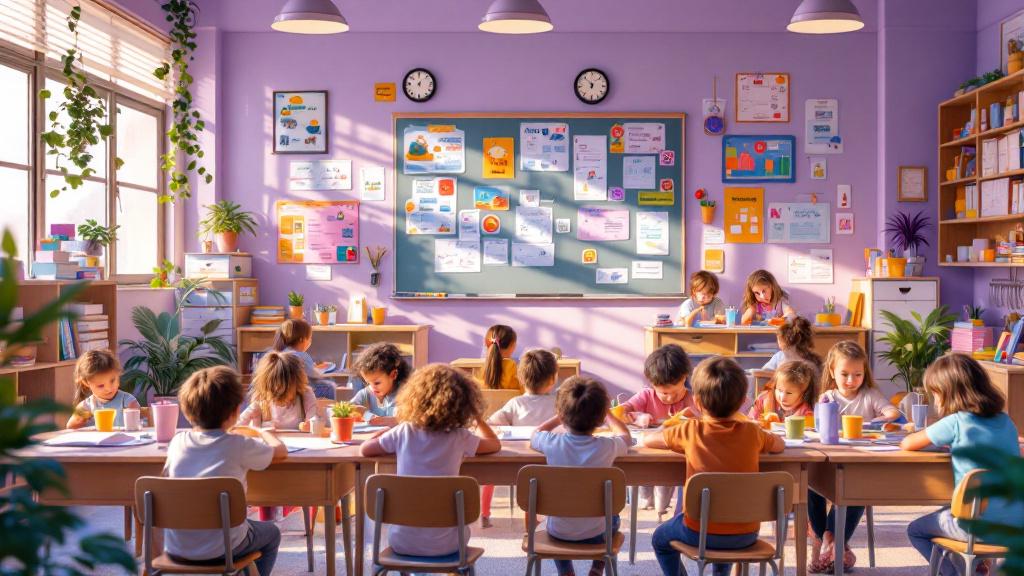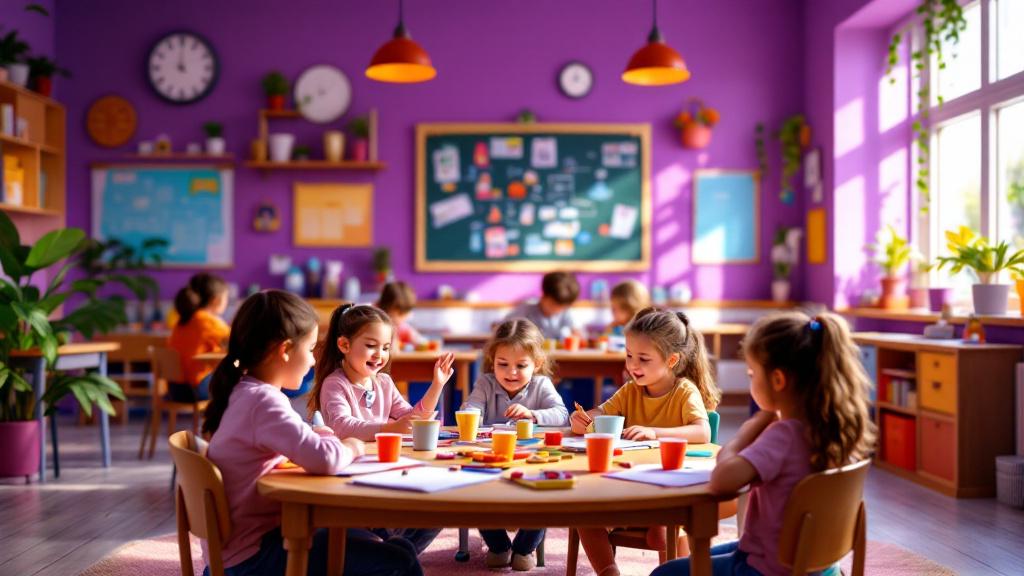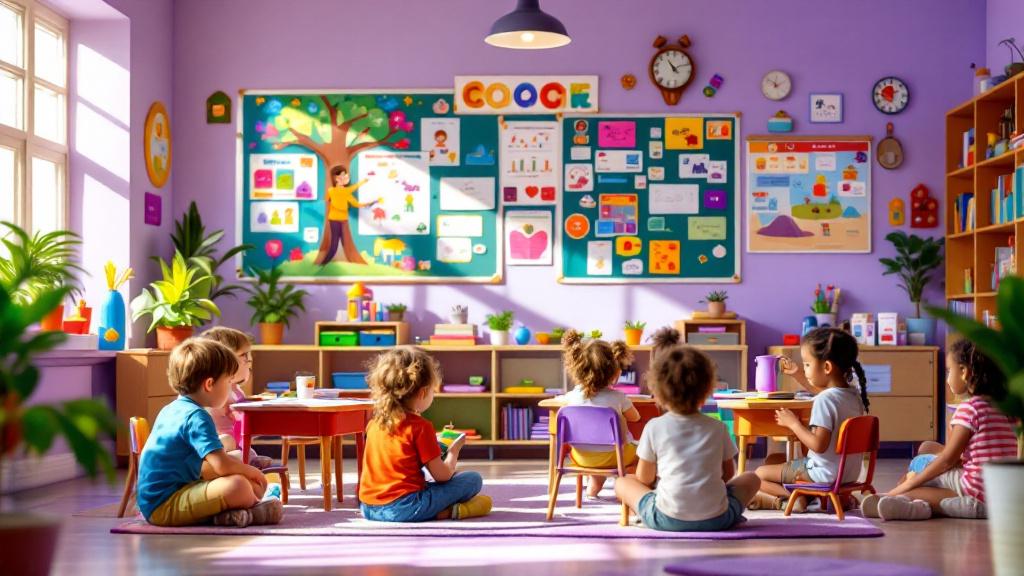Understanding ABA’s Role in Social Skill Development
Applied Behavior Analysis (ABA) is a highly effective, evidence-based approach widely used to improve social skills and peer relationships among children with autism spectrum disorder (ASD). By systematically teaching and reinforcing social behaviors, ABA helps children navigate complex social environments, fostering meaningful interactions and emotional understanding. This article explores how ABA techniques support social development, especially in enhancing peer connections, and highlights the strategies used to foster lasting social skills in various settings.
Structured Interventions and Peer-Mediated Strategies
 Peer-mediated interventions are structured approaches that actively involve classmates to support the development of social and behavioral skills. These strategies focus on fostering healthy social interaction, communication, and problem-solving abilities through natural peer exchanges.
Peer-mediated interventions are structured approaches that actively involve classmates to support the development of social and behavioral skills. These strategies focus on fostering healthy social interaction, communication, and problem-solving abilities through natural peer exchanges.
A variety of activities are employed to encourage engagement and skill acquisition. Commonly used methods include group games that promote cooperation, role-playing scenarios to practice social responses, and collaborative projects that build teamwork and understanding.
The main goal of these interventions is to enhance how students interact socially, communicate effectively, and solve problems together. By creating opportunities for positive peer interactions, these strategies help students generalize social skills across different settings and relationships.
For successful implementation, educators identify specific social goals, select empathetic peers as role models, design meaningful activities, and provide thorough training for participating students. Regular monitoring through observation, data collection, and feedback allows educators to evaluate progress and refine strategies.
In addition to peer-mediated techniques, Applied Behavior Analysis (ABA) significantly contributes to improving social skills for children with autism. ABA uses structured methods like reinforcement, modeling, role-playing, and social stories to teach essential skills such as starting conversations, maintaining eye contact, recognizing social cues, and engaging with peers.
These approaches incorporate skill breakdown, positive reinforcement, and real-world practice to help children develop and sustain meaningful peer relationships. Over time, ABA interventions support not just social competence but also emotional regulation, independence, and academic success, creating inclusive environments that promote social engagement for children with autism.
Teaching Social Skills Through Natural Peer Interactions
Peer-mediated interventions are effective strategies that involve classmates in helping each other develop social skills. These approaches focus on creating natural interactions that promote social engagement, communication, and problem-solving among students.
By encouraging peer modeling and interaction, these interventions help students learn and practice skills like cooperation, conflict resolution, and social communication in real-life settings. For example, activities such as group games, role-playing, and collaborative projects serve as opportunities for students to model positive behaviors and learn from each other.
Implementing peer-mediated strategies involves setting clear goals, choosing empathetic peers, designing structured activities, and providing appropriate training. Educators monitor progress through observations, data collection, and feedback to assess effectiveness and make necessary adjustments.
The benefits of peer-mediated interventions include fostering better social relationships, increasing motivation, and promoting the generalization of skills across different environments. These methods can be tailored to suit various age groups and developmental levels, ensuring inclusive support for all students.
However, managing peer dynamics presents challenges, such as ensuring appropriate interactions and providing adequate training for participating students. Despite these obstacles, when properly implemented and monitored, peer-mediated interventions significantly enhance social participation and reduce behavioral issues.
How does ABA therapy improve social-emotional and communication skills in children with autism?
ABA therapy helps children with autism develop social-emotional and communication abilities through evidence-based techniques like role-playing, positive reinforcement, modeling, and natural environment teaching. It addresses difficulties such as interpreting social cues, maintaining eye contact, initiating conversations, and understanding emotions.
Through targeted interventions, ABA breaks down complex social skills into manageable steps, allowing children to learn and practice these skills effectively. Techniques like Discrete Trial Training, group social skills sessions, and use of visual tools like PECS motivate children and support both verbal and non-verbal learners. These personalized programs enable children to generalize their new skills across settings, leading to improved social engagement and emotional understanding.
In summary, ABA therapy enhances children’s capacity to interact socially, understand others’ emotions, and build relationships, promoting greater inclusion, independence, and emotional regulation in children with autism.
Implementing ABA in Educational Contexts to Enhance Social Skills
How can ABA be used to improve social skills and peer relationships in educational settings?
Applied Behavior Analysis (ABA) is a proven approach to fostering social skills and building better peer relationships, especially for children with autism spectrum disorder (ASD). In schools, ABA employs structured techniques such as role-playing, modeling, and positive reinforcement to teach crucial skills like effective communication, understanding social cues, sharing, and turn-taking.
The intervention process begins with careful assessment to identify each student's specific needs and setting clear, measurable goals. These goals can focus on improving eye contact, initiating conversations, or resolving conflicts. Teachers and therapists then design personalized, step-by-step strategies tailored to each child's developmental level.
Group activities, collaborative projects, and peer interactions are incorporated to help students practice social skills in real-life contexts. These structured interactions promote not only skill acquisition but also the generalization of those skills across different settings. As a result, students develop stronger peer relationships, are more motivated to participate, and often display reduced behavioral problems.
Tracking progress is an integral part of ABA; educators regularly observe, collect data, and adjust interventions as needed. This evidence-based approach ensures consistent development and helps children gain confidence in their social abilities. Overall, ABA's structured and engaging strategies significantly enhance social competence and peer engagement within educational environments.
Fostering Social Connectivity and Empathy

How does ABA therapy help children with autism build social connections?
ABA therapy plays a vital role in helping children with autism develop strong social connections. It systematically teaches foundational skills such as how to initiate conversations, share, make eye contact, and take turns during interactions.
One effective method used is role-playing, where children practice real-life social scenarios in a controlled, supportive environment. This builds confidence and prepares them for spontaneous interactions. Modeling and social stories further reinforce understanding of social cues and appropriate responses.
Reinforcement strategies are central to ABA, involving praise, rewards, or tokens to motivate children to practice and apply new skills. These positive incentives encourage ongoing engagement and help skills stick over time.
To promote real-world applicability, ABA involves coordinated efforts with parents, teachers, and caregivers. Consistent reinforcement across different settings ensures children generalize their skills beyond therapy sessions.
Group activities and peer-mediated interventions offer additional opportunities for children to practice social exchanges, fostering relationships and empathy. By addressing both verbal and non-verbal communication, ABA supports children in understanding others better and navigating social situations effectively.
In summary, ABA therapy enhances social development through a combination of structured instruction, positive reinforcement, and collaborative support, leading to improved peer relationships, emotional understanding, and overall social functioning.
Addressing Nonverbal Communication and Emotional Regulation

How does ABA help improve the recognition and response to social cues?
Applied Behavior Analysis (ABA) is instrumental in teaching children with autism to recognize and interpret social cues such as facial expressions and body language. Using tools like video modeling, therapists can show children accurate examples of social interactions, helping them understand what different expressions or gestures mean. These visual aids make it easier for children to grasp non-verbal cues and respond appropriately.
What tools are used in ABA to support understanding social cues?
Video modeling is a commonly used method in ABA therapy. It involves showing short videos that depict appropriate responses to various social situations. This technique allows children to observe and imitate desired behaviors in a controlled, engaging way. Role-playing activities also serve as practical exercises where children practice responding to cues like smiling, turn-taking, or maintaining eye contact.
How does ABA address emotional regulation?
Supporting emotional regulation is a vital part of ABA. Techniques such as teaching relaxation methods and recognizing emotional states through storytelling and role-playing help children understand and manage their feelings. These strategies enable children to stay calm in social settings and respond appropriately, which is essential for meaningful peer interactions.
Why are these skills important for social success?
Teaching recognition of social cues and emotional regulation directly impacts a child's ability to build and maintain peer relationships. When children understand non-verbal signals and manage their emotions effectively, they engage more confidently in social interactions. It reduces social isolation and fosters positive relationships with peers, promoting inclusivity.
| Technique | Description | Benefits |
|---|---|---|
| Video Modeling | Viewing videos demonstrating social responses | Improves understanding of cues, encourages imitation |
| Role-Playing | Practicing social interactions in controlled settings | Reinforces skills, boosts confidence |
| Relaxation Training | Teaching calming techniques | Helps regulate emotions, reduces anxiety |
This structured approach ensures children develop lasting social skills that are applicable across settings. Through consistent practice and reinforcement, ABA helps children build meaningful connections and navigate social environments successfully.
Long-Term Benefits of ABA in Social Development
What is the role of ABA in improving peer relationships and social skills for children with autism?
Applied Behavior Analysis (ABA) is a well-established approach that significantly enhances social skills and peer interactions for children on the autism spectrum. Using structured, evidence-based strategies like reinforcement, modeling, and role-playing, ABA helps children learn and practice foundational social behaviors.
One of the core elements of ABA is social skills groups and peer-mediated activities. These activities are designed to promote behaviors such as initiating conversations, sharing, responding appropriately, and taking turns. By breaking down complex social skills into manageable steps and consistently reinforcing positive actions, children gradually develop better communication and non-verbal cues like eye contact and recognizing social cues.
ABA emphasizes practicing skills both in structured settings and natural environments to support real-world application. Techniques like social stories and real-life scenarios teach children how to navigate social interactions confidently.
Regular monitoring, along with collaboration between therapists, educators, and families, ensures that social improvements are sustained over time. The overall goal is to foster inclusive environments where children with autism can build meaningful peer relationships, leading to wider social engagement and increased independence.
Evaluating Effectiveness and Overcoming Challenges
Monitoring progress is essential to ensure that peer-mediated interventions and ABA programs are effective. Educators and therapists utilize observation, data collection, and feedback to track improvements in social interactions and behavior. Regular assessments help identify what strategies are working and where adjustments may be needed.
Managing peer dynamics and individual differences presents a common challenge. Not all peers respond similarly, and some students may have unique social or developmental needs. Careful selection of empathetic peers and tailored activities can promote positive interactions while respecting individual differences.
Implementing these strategies consistently while addressing potential challenges is crucial. Providing comprehensive training for peers and staff ensures everyone understands their roles. Ongoing supervision and flexibility allow programs to adapt to changing student needs, promoting sustained success.
What is the role of ABA in improving peer relationships and social skills for children with autism?
Applied Behavior Analysis (ABA) significantly enhances social skills and peer relationships for children with autism. It uses structured, evidence-based techniques such as reinforcement, modeling, role-playing, and social stories to teach essential social behaviors. Through social skills groups and peer-mediated activities, children learn to initiate interactions, share, take turns, and respond appropriately.
ABA breaks down complex skills into manageable steps and employs positive reinforcement, boosting motivation and confidence. It also addresses non-verbal cues, eye contact, and emotion recognition—critical components of meaningful peer connections. Practice occurs in both structured and natural environments, ensuring skills transfer to real-life situations. Continuous observation, data collection, and collaboration with families support enduring improvements and foster inclusive social settings.
Building Lasting Skills for Social Inclusion

How does ABA therapy foster social connections among children with autism?
ABA therapy plays a significant role in helping children with autism build strong social relationships. It systematically teaches key social skills such as initiating interactions, sharing, turn-taking, and understanding social cues. These skills are often practiced through engaging activities like role-playing, modeling, and social stories that simulate real-life situations.
Reinforcement strategies, including praise, rewards, or tokens, motivate children to practice new skills and help them retain learned behaviors. This positive reinforcement makes social learning engaging and effective. To ensure these skills are useful beyond the therapy setting, ABA involves parents, teachers, and caregivers, creating a consistent learning environment across home, school, and community.
Communication is a core focus of ABA. It incorporates verbal, non-verbal, and alternative communication methods, which are essential for meaningful interaction. Group sessions and peer-mediated interventions give children with autism opportunities to practice social exchanges, boosting their confidence and empathy.
Furthermore, ABA addresses complex social behaviors such as conflict resolution and emotional regulation. By teaching children to recognize and manage their emotions and respond appropriately to others, the therapy helps them navigate social situations more independently. Overall, ABA’s structured approach supports children in forming and maintaining lasting social connections, fostering a sense of belonging and inclusion.
Conclusion: Nurturing Social Development Through ABA
Applied Behavior Analysis (ABA) has a significant impact on improving peer relationships and social skills among children with autism. By employing structured, evidence-based techniques like reinforcement, modeling, role-playing, and social stories, ABA helps children learn and practice vital social behaviors. These interventions often involve group activities and peer-mediated strategies that encourage children to initiate interactions, respond appropriately, share, and take turns, thereby enhancing the quality of their social exchanges.
A critical aspect of ABA is breaking down complex social skills into manageable steps and using positive reinforcement to motivate learning. This approach improves skills such as eye contact, recognizing social cues, and understanding non-verbal communication, which are essential for forming meaningful peer connections. Importantly, ABA strategies are applied across both controlled and natural environments, promoting the generalization of skills to everyday social settings.
The success of ABA relies on ongoing collaboration among therapists, educators, and families. Regular monitoring through observation, data collection, and feedback ensures that interventions remain effective and tailored to each child's evolving needs. Maintaining this collaborative effort supports continuous progress and the development of inclusive, socially engaging environments where children with autism can thrive.
Ultimately, sustained focus on social skills development through ABA fosters better peer relationships, emotional regulation, and social participation. These improvements not only enhance the child's quality of life but also promote their independence and academic success, paving the way for a more inclusive social experience.
Fostering Inclusive Social Environments
Overall, ABA is a powerful tool for promoting social connections among children with autism. By systematically teaching social skills, reinforcing positive behaviors, and encouraging natural interactions, ABA helps children build confidence, develop empathy, and establish lasting peer relationships. Continued collaboration among therapists, educators, and families ensures that these skills are maintained and generalized, fostering inclusive environments where all children can thrive socially and emotionally.
References
- Peer-Mediated Interventions in School-Based ABA Therapy
- ABA therapy enhances Social Skills
- ABA Therapy in Schools: Improving Social Skills and ...
- Teaching social skills to students with autism to increase ...
- Strengthening Social Skills with ABA Therapy for Autism
- Peer Play: Facilitating Positive Social Interactions for Autism
- ABA Therapy's Impact on Social Skills
- Enhancing Social Skills Through ABA Therapy
- Developing Social Skills Through ABA Therapy for Autism
- ABA Therapy for Social Skills: Building Connections
















































